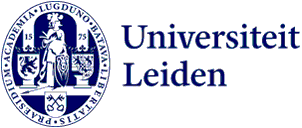
‘We even found a diaper’: mapping Leiden through a different lens
Getting up at 5 AM, strolling through rain and looking at a dirty diaper: students of the Honours College Archaeology endured it all. For their class ‘Future cities, urban pasts’ they mapped the city of Leiden in various forms. ‘This honours track demonstrates how we can take archaeology a step further.’
Just before the Christmas break, honours students gathered for their last class of Future cities, urban pasts. The aim of the course is to investigate ways in which archaeology could be used in future city planning, says course instructor Tuna Kalayci. ‘And city planning makes use of many different disciplines, so it is cool to see how the students from different backgrounds approach the materials we discuss in class.’
This variety of approaches came to life in the final meeting, where the students presented the way they mapped Leiden and discussed their findings. The students were divided into three separate groups. All groups studied the Haarlemmerstraat, the shopping street of Leiden, but how they studied it differed per group.

Trash as data
One of the most remarkable approaches was the use of trash as data. Archaeologists love trash: it is an invaluable source for mapping and understanding human practice. Trash is not time-dependent, since it is always available, and it provides many data-entries, because there is so much of it to be found. This makes trash an accessible source of information.
One group, consisting of people from different countries and studies, looked at trash that was left on the Haarlemmerstraat and surrounding alleyways. The students got up at 5 AM to observe the trash and categorized whether it was produced by activities related to free time, essential needs or whether it was work-related.
This enabled them to reconstruct the urban activities that take place in the area. ‘To our surprise someone also left a dirty diaper in one of the alleyways, but the trash mostly consisted of food packaging, drink containers and shopping bags or receipts. This indicates that people tend to visit the area in their free time to shop or to get food.’

Stalking Leiden
Another group focused on what they called ‘Stalking Leiden’, because they wanted to track the historical transition of the Haarlemmerstraat. They found that the Liquor act of 1881 may be why it is the shopping street of Leiden today. Before the Liquor act, the Haarlemmerstraat was plagued by public intoxication incidents. The new law made it less profitable for bar owners to conduct their business here, creating more space for shops. ‘And it makes sense for shops to cluster together, because consumers have to walk less far to find similar items.’
Out of your comfort zone
After the presentations, Kalayci opened the floor for a discussion of their findings. The ‘femininity’ of the Haarlemmerstraat, the ‘grammar of space’ and how archaeology fits into it all: the conversation could be hard to follow for an outsider, but the students enjoyed the discussion all the more.
Emma, a political science student, explains why she chose the honours track Archaeology & Society: ‘When you study in a certain field, there is a particular way of thinking and approaching certain issues that you could get stuck in. Following this track is a cool way of adapting a different mindset and getting out of your comfort zone.’
For Alexia, the course is a valuable contribution to her archaeology bachelor: ‘This track provides an additional challenge and demonstrates how we can take archaeology a step further, because archaeology can be applied in many situations and for various issues.’ Today’s presentations were a good example of that.
Tekst: Lynn Mans
Foto's: Buro JP



